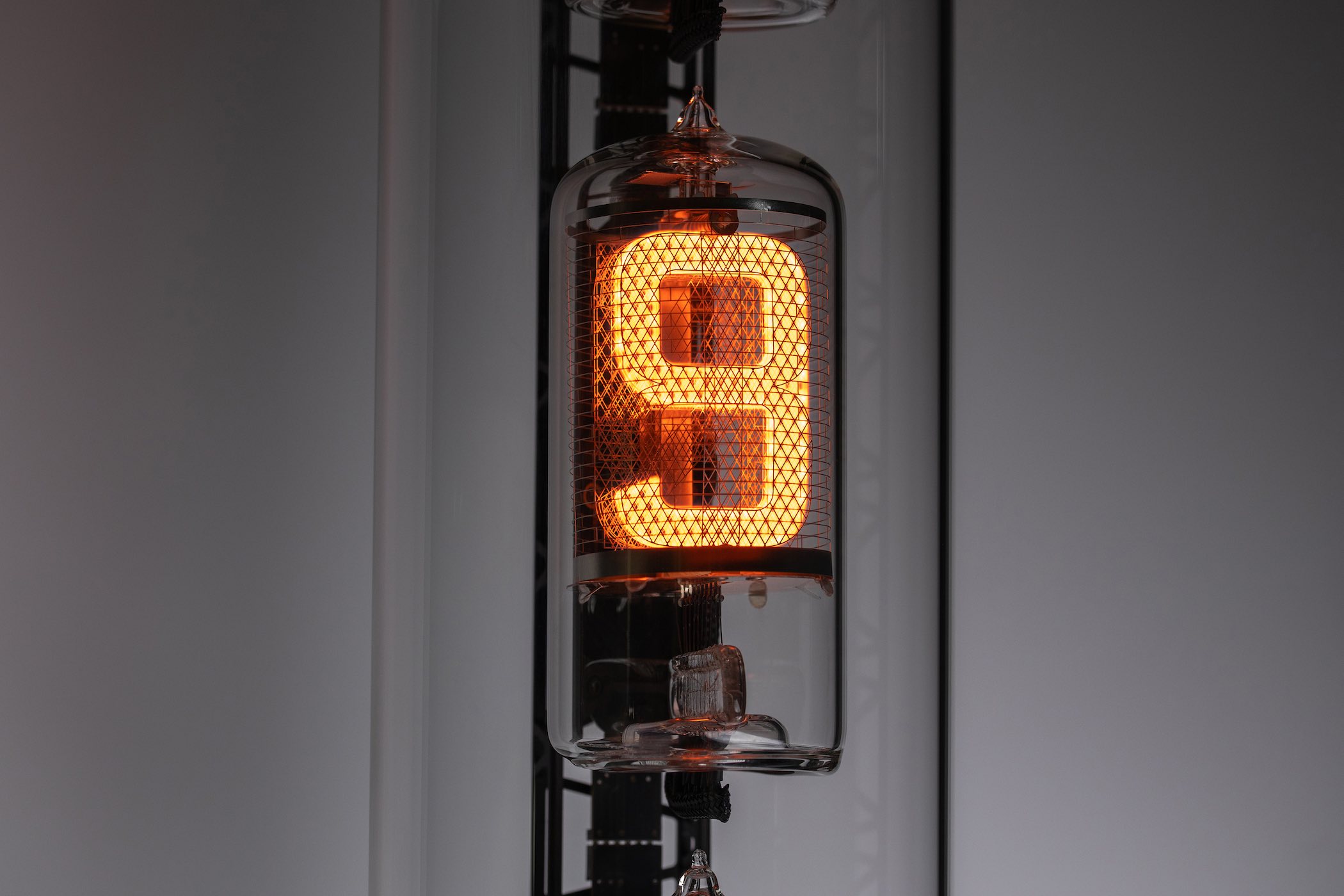Urwerk’s Extraordinary SpaceTime Blade Reenters Earth’s Atmosphere
What happens when you mix a lightsaber with vintage glowing Nixie tubes and Urwerk’s obsession with space-time indications?

A lightsaber, wielded by Force-sensitive characters in Star Wars, is a luminescent laser sword powered by a kyber crystal. Shaped like a lightsaber, Urwerk’s SpaceTime Blade cuts through all timekeeping mechanisms with its unique display and countless timings related to our planet delivered via glowing orange Nixie bulbs. Marking its reentry into our atmosphere, Urwerk’s “intergalactic horological creation”, initially destined for the Only Watch charity auction of 2023, is now offered in a limited edition of 33 units. Unlike any former Urwerk timepiece designed to capture time and distance (UR-100), this unique upright clock houses its indications inside a 1.70m-long, 20-kilogram glass blade composed of eight Nixie tubes with eight settings displaying everything from mundane hour and minute indications to the Earth’s revolution around the Sun in kilometres over the course of a year. Rest assured, it will become the hottest talking piece once you’ve got it installed in your living room.
Urwerk’s independent mindset has marked the trajectory of the brand, renowned for its wandering hours, planetary gears and satellite complications transported on board futuristic sci-fi vessels. Felix Baumgartner, master watchmaker and co-founder of the brand, attributes the inspiration for the SpaceTime Blade to Gustave Sandoz’s extraordinary 19th-century regulator clock that calculates the distance travelled by a person standing on the Equator as the Earth rotates on its axis every 24 hours. “This totally original instrument,” says Baumgartner, “reminded us of our conditions as mere passengers on the space vessel Earth, hurtling through the galaxy at phenomenal speed.”
Although Urwerk has already displayed the Earth’s rotations and revolutions around the Sun in kilometres on its UR-100 models, it radically changes the format with the SpaceTime Blade that stands tall and emits an orange glow capable of displaying the time taken for Earth to travel the 940 million kilometres around the Sun each year in hours, minutes, and seconds.
While the information delivered on the upright glass column can change at a mind-blowing rate of 500 times per second, the structure of the SpaceTime Blade relies on good old artisanal crafts. The bronze crown at the base is crafted by hand using the lost-wax casting technique and looks somewhat similar to the sword hilt of a lightsaber.
Protected by a glass dome with a rounded top, the eight vertically aligned and oblong-shaped Nixie bulbs are flame-shaped by hand. Nixie tubes, aka cold cathode displays, were invented in 1936 but not commercialised until the 1950s. Using 10 or 12 cathode threads inside a sealed glass tube with an inert gas that is wired to an electrical contact, Nixie tubes were used to display the time or other indications via glowing orange numbers until they were eventually replaced by LED technology. The eight bulbs were crafted in a Czech Republic glass workshop. Dalibor Farny, a pioneer in the revival of Nixie tube technology, supervised the bulbs, which were wired by hand using tweezers to shape the ten, 0.1mm steel cathode numerals identical to those used on Urwerk’s dials. Containing 88 parts, each bulb is filled with low-pressure neon gas and, when activated, produces the orange display.
The TimeSpace Blade is powered by an electrical spinal column and offers the following indications activated via a remote control:
- Position 1: Indication of the hours, minutes and seconds
- Position 2: Indication of the hours, minutes, seconds, 1/10th and 1/100th of a second
- Position 3: Indication of the day, month, year
- Position 4: Indication in km of the Earth’s daily rotation measured at the Equator
- Position 5: Indication in km of the Earth’s daily revolution around the Sun
- Position 6: Indication in km of the Earth’s revolution around the Sun in one year
- Position 7: Shuffle mode
- Position 8: Pause mode`
Availability & Price
The Urwerk SpaceTime Blade is limited to 33 units and retails for CHF 55,000 (excl. tax). For more information, please consult urwerk.com.








